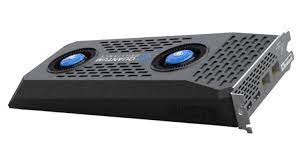
Breaking News
 Battleborn Batteries Responds! Their Overheating Device is a "Feature" not a "Problem
Battleborn Batteries Responds! Their Overheating Device is a "Feature" not a "Problem
 Actor Liam Neeson Outs Himself as MAHA After Narrating Pro-RFK Jr. Documentary Slamming...
Actor Liam Neeson Outs Himself as MAHA After Narrating Pro-RFK Jr. Documentary Slamming...
 Kyle Rittenhouse announced on social media Wednesday that he has tied the knot.
Kyle Rittenhouse announced on social media Wednesday that he has tied the knot.
 JUST IN: President Trump Grants Tina Peters Pardon
JUST IN: President Trump Grants Tina Peters Pardon
Top Tech News
 Build a Greenhouse HEATER that Lasts 10-15 DAYS!
Build a Greenhouse HEATER that Lasts 10-15 DAYS!
 Look at the genius idea he came up with using this tank that nobody wanted
Look at the genius idea he came up with using this tank that nobody wanted
 Latest Comet 3I Atlas Anomolies Like the Impossible 600,000 Mile Long Sunward Tail
Latest Comet 3I Atlas Anomolies Like the Impossible 600,000 Mile Long Sunward Tail
 Tesla Just Opened Its Biggest Supercharger Station Ever--And It's Powered By Solar And Batteries
Tesla Just Opened Its Biggest Supercharger Station Ever--And It's Powered By Solar And Batteries
 Your body already knows how to regrow limbs. We just haven't figured out how to turn it on yet.
Your body already knows how to regrow limbs. We just haven't figured out how to turn it on yet.
 We've wiretapped the gut-brain hotline to decode signals driving disease
We've wiretapped the gut-brain hotline to decode signals driving disease
 3D-printable concrete alternative hardens in three days, not four weeks
3D-printable concrete alternative hardens in three days, not four weeks
 Could satellite-beaming planes and airships make SpaceX's Starlink obsolete?
Could satellite-beaming planes and airships make SpaceX's Starlink obsolete?
Quantum computing hits the desktop, no cryo-cooling required

They work at room temperature, undercutting and outperforming today's huge, cryo-cooled quantum supercomputers, and soon they'll be small enough for mobile devices.
Superconducting quantum computers are huge and incredibly finicky machines at this point. They need to be isolated from anything that might knock an electron's spin off and ruin a calculation. That includes mechanical isolation, in extreme vacuum chambers, where only a few molecules might remain in a cubic meter or two of space. It includes electromagnetic forces – IBM, for example, surrounds its precious quantum bits, or qubits, with mu metals to absorb all magnetic fields.
They work at room temperature, undercutting and outperforming today's huge, cryo-cooled quantum supercomputers, and soon they'll be small enough for mobile devices.
Superconducting quantum computers are huge and incredibly finicky machines at this point. They need to be isolated from anything that might knock an electron's spin off and ruin a calculation. That includes mechanical isolation, in extreme vacuum chambers, where only a few molecules might remain in a cubic meter or two of space. It includes electromagnetic forces – IBM, for example, surrounds its precious quantum bits, or qubits, with mu metals to absorb all magnetic fields.

 First totally synthetic human brain model has been realized
First totally synthetic human brain model has been realized Mach-23 potato gun to shoot satellites into space
Mach-23 potato gun to shoot satellites into space

